- Fittonia: Tips for Care, Stunning Photos, and Different Species
- Tips for Care:
- Stunning Photos:
- Different Species:
- How to Care for Fittonia
- Choosing the Right Lighting for Your Fittonia
- 1. Bright, Indirect Light
- 2. Avoid Direct Sunlight
- 3. Low Light Conditions
- 4. Experiment and Observe
- 5. Seasonal Adjustments
- Watering and Humidity Requirements for Fittonia
- Fertilizing Fittonia: Dos and Don’ts
- Do:
- Don’t:
- Common Problems and Solutions for Fittonia
- Yellow leaves
- Brown leaf edges
- Wilting
- Pest infestations
- Leaf curling
- Stunted growth
- Gorgeous Photos of Fittonia Varieties
- Different Species of Fittonia: A Brief Overview
- 1. Fittonia albivenis
- 2. Fittonia argyroneura
- 3. Fittonia gigantea
- 4. Fittonia pearcei
- 5. Fittonia verschaffeltii
- 6. Fittonia albivenis ‘Frankie’
- Propagating Fittonia: Step-by-Step Guide
- 1. Gather the necessary materials:
- 2. Choose a healthy parent plant:
- 3. Prepare the pots:
- 4. Take cuttings:
- 5. Plant the cuttings:
- 6. Provide proper care:
- 7. Wait for roots to develop:
- 8. Transplant the rooted cuttings:
- Q&A:
- What are some general care tips for Fittonia plants?
- How often should I water my Fittonia plant?
- What are the different species of Fittonia plants?
- How can I propagate Fittonia plants?
- What are some common problems that can occur with Fittonia plants?
- Video: NERVE PLANT Care Tips | Fittonia Houseplant Care
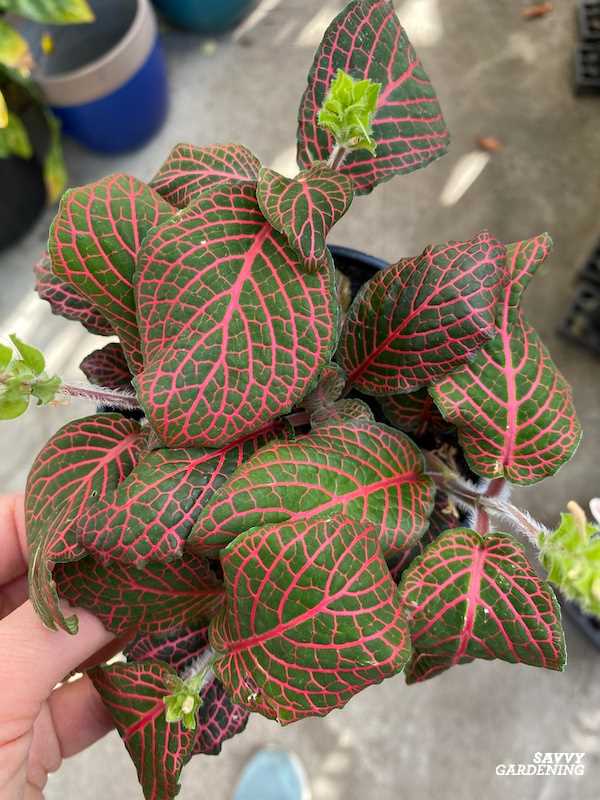
Fittonia, also known as nerve plant or mosaic plant, is a popular houseplant known for its colorful foliage and ease of care. Native to the tropical rainforests of South America, Fittonia is often used as a groundcover in its natural habitat. Its vibrant leaves, which come in a variety of colors and patterns, make it a visually stunning addition to any indoor garden.
When it comes to caring for Fittonia, there are a few key things to keep in mind. First, it prefers bright, indirect light, so it’s important to place it in a location where it can receive plenty of filtered sunlight. Direct sunlight can scorch the leaves and cause the plant to wilt. Fittonia also thrives in high humidity, so misting the leaves with water or placing the pot on a tray filled with water and pebbles can help create the moist environment it craves.
Another important aspect of Fittonia care is watering. It’s crucial to keep the soil consistently moist, but not soggy. Overwatering can lead to root rot, while underwatering can cause the leaves to curl and lose their color. To strike the right balance, water the plant when the top inch of soil feels dry to the touch. It’s also a good idea to use a well-draining potting mix to prevent water from sitting in the bottom of the pot.
Fittonia comes in several different species, each with its own unique characteristics. Some species have white or pink veins on their leaves, while others have intricate patterns in shades of green and red. Common species include Fittonia albivenis, Fittonia argyroneura, and Fittonia verschaffeltii. Each species requires similar care, but the choice of species ultimately depends on personal preference and desired aesthetic.
In conclusion, Fittonia is a stunning houseplant that adds a touch of color and vibrancy to any indoor space. With proper care and attention to lighting, humidity, and watering, it can thrive and grow into a lush, beautiful plant. Whether you choose a variety with bold pink veins or a more subtle pattern, Fittonia is sure to be a standout in your indoor garden.
Fittonia: Tips for Care, Stunning Photos, and Different Species
Fittonia, commonly known as nerve plant or mosaic plant, is a popular indoor plant known for its vibrant foliage and low-maintenance care requirements. In this article, we will provide you with useful tips for caring for your Fittonia, share stunning photos to inspire you, and introduce you to different species of Fittonia.
Tips for Care:
1. Light: Fittonia prefers bright but indirect light. Avoid placing it in direct sunlight as it can scorch the leaves.
2. Water: Keep the soil consistently moist but not waterlogged. Water when the top inch of soil feels dry.
3. Humidity: Fittonia thrives in high humidity environments. Mist the leaves regularly or place the plant on a tray filled with pebbles and water to create a humid microclimate.
4. Temperature: Fittonia prefers temperatures between 60-80°F (15-27°C). Avoid exposing it to cold drafts or extreme temperature fluctuations.
5. Soil: Plant Fittonia in well-draining soil that retains some moisture. A mix of peat moss, perlite, and potting soil works well.
Stunning Photos:
- Photo 1: A close-up of a vibrant red and green Fittonia leaf.
- Photo 2: A variegated Fittonia plant with leaves displaying intricate patterns of pink, white, and green.
- Photo 3: A lush green Fittonia plant cascading from a hanging planter.
- Photo 4: A macro shot of the delicate veins on a Fittonia leaf.
Different Species:
There are several species of Fittonia, each with its unique characteristics. Here are a few popular ones:
| Species | Description |
|---|---|
| Fittonia albivenis | Has green leaves with white veins. It is the most common species found in cultivation. |
| Fittonia verschaffeltii | Known for its striking red veins on green leaves. It adds a pop of color to any indoor space. |
| Fittonia gigantea | Has larger leaves compared to other species. It is an eye-catching variety. |
Whether you’re a beginner or an experienced plant enthusiast, Fittonia is sure to add a touch of elegance and charm to your indoor garden. Follow these care tips, get inspired by the stunning photos, and explore different species to find the perfect Fittonia for your collection.
How to Care for Fittonia
1. Light: Fittonia plants prefer bright, indirect light. They can tolerate some morning sun, but be sure to protect them from direct afternoon sunlight, as it may scorch their leaves.
2. Temperature: Fittonia plants thrive in temperatures between 60-80°F (15-27°C). They can tolerate slightly cooler temperatures, but avoid exposing them to temperatures below 50°F (10°C).
3. Humidity: Fittonia plants are native to tropical rainforests and require high humidity. To increase humidity levels, you can place a tray of water near the plant or use a room humidifier. Misting the leaves with water also helps to provide moisture.
4. Watering: Fittonia plants like to be kept evenly moist, but not soggy. Water them when the top inch of soil feels dry to the touch. Avoid overwatering, as this can lead to root rot. Using a well-draining potting mix and pots with drainage holes can help prevent waterlogged soil.
5. Fertilizer: Feed Fittonia plants with a balanced, water-soluble fertilizer during the growing season (spring and summer). Follow the instructions on the fertilizer packaging for application rates and frequency.
6. Pruning: Regularly trim back any leggy or overgrown stems to promote a bushy growth habit. Pinching off the tips of the stems also encourages branching.
7. Propagation: Fittonia plants can be propagated through stem or leaf cuttings. Simply take a cutting with at least two nodes, remove the lower leaves, and place it in a moist potting mix. Keep the cutting warm and humid until roots develop.
8. Pest control: Keep an eye out for common houseplant pests like aphids, mealybugs, and spider mites. If you notice any signs of infestation, use an organic insecticidal soap or neem oil to eliminate the pests.
9. Repotting: Fittonia plants prefer slightly crowded conditions, so they don’t need to be repotted often. Repotting every 1-2 years or when the roots start to stick out of the drainage holes is sufficient. Use a pot with drainage holes and fresh potting mix when repotting.
10. Toxicity: Fittonia plants are not known to be toxic to humans or pets. However, it’s always best to keep plants out of the reach of small children and curious pets.
Choosing the Right Lighting for Your Fittonia
Proper lighting is an essential factor in the successful care of Fittonia plants. While these plants thrive in bright, indirect light, it is important to find the right balance to prevent sunburn or excessive shade.
1. Bright, Indirect Light
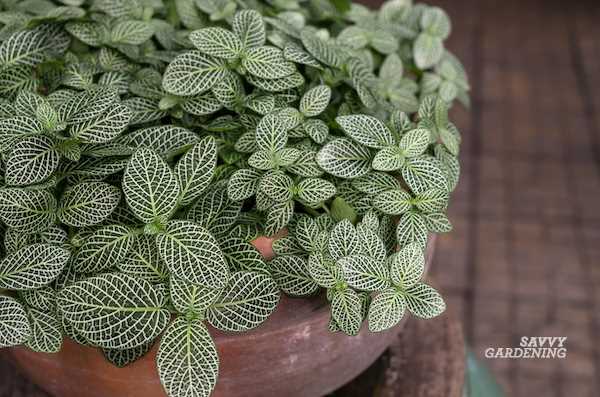

Fittonia plants prefer bright, indirect light. They can tolerate some morning or evening sun, but direct sunlight during the middle of the day can cause the leaves to become scorched or wilted. Place your Fittonia plant near a window that receives bright, filtered light, or use sheer curtains or blinds to create a diffused light environment.
2. Avoid Direct Sunlight
Direct sunlight can be harmful to Fittonia plants, especially during the hottest parts of the day. If you notice your plant’s leaves turning brown or developing dry, crispy edges, it may be getting too much direct sunlight. Move your Fittonia to a spot with less direct sun exposure or provide some shade using sheer curtains or blinds.
3. Low Light Conditions
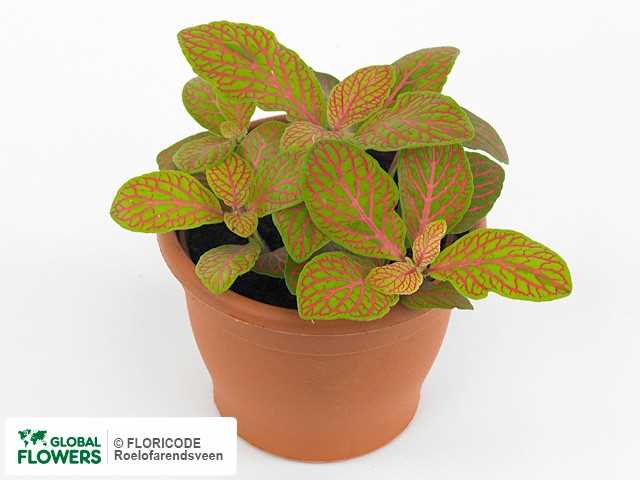

While Fittonia plants prefer bright, indirect light, they can also tolerate low light conditions. If your living space doesn’t have a lot of natural light, you can still enjoy these beautiful plants. Place your Fittonia plant in a room with bright, artificial light sources, such as fluorescent or LED lights. Just be sure to provide enough light to prevent the leaves from becoming pale or yellowish.
4. Experiment and Observe
Each Fittonia plant may have slightly different lighting requirements, so it’s important to experiment and observe your plant’s response to different light conditions. Monitor the color and health of the leaves to determine if they are receiving the right amount of light. If the leaves become pale or yellowish, they may need more light, while brown or wilted leaves may indicate too much light.
5. Seasonal Adjustments
Fittonia plants may require different lighting conditions during different seasons. In the winter, when the sun is weaker, you may need to move your plant closer to a window to ensure it receives enough light. In the summer, when the sun is stronger, you may need to provide more shade or move your plant slightly further from the window to avoid excessive direct sunlight.
By choosing the right lighting for your Fittonia plant, you can ensure its healthy growth and vibrant foliage. Remember to monitor the light conditions and make adjustments as necessary to create a suitable environment for your plant to thrive.
Watering and Humidity Requirements for Fittonia
Fittonia plants require regular watering to keep the soil consistently moist, but not waterlogged. It is important to avoid letting the soil dry out completely between waterings, as this can cause the leaves to wilt and the plant to become stressed.
When watering a Fittonia, it is best to water thoroughly and allow any excess water to drain away. Avoid leaving the plant sitting in standing water, as this can lead to root rot. The frequency of watering will depend on the temperature and humidity levels in your home. In general, Fittonia plants may need to be watered every 2-3 days during warmer weather, and every 4-5 days during cooler weather.
Fittonia plants are native to the tropical rainforests of South America, and they thrive in high humidity levels. To provide the ideal humidity for your Fittonia, you can mist the leaves regularly with water or place the plant on a tray filled with water and pebbles. As the water evaporates, it will increase the humidity around the plant.
If the humidity in your home is low, you can also consider using a humidifier or grouping your Fittonia with other plants to create a microclimate with higher humidity.
It is important to note that while Fittonia plants prefer high humidity, they are also susceptible to fungal diseases if the foliage remains wet for extended periods. To prevent this, it is best to water the soil directly and avoid getting the leaves wet.
In summary, Fittonia plants require regular watering to keep the soil consistently moist. They also thrive in high humidity levels, so it is important to provide adequate moisture to the plant through misting or other methods. However, it is essential to avoid overwatering and allow excess water to drain away to prevent root rot.
Fertilizing Fittonia: Dos and Don’ts
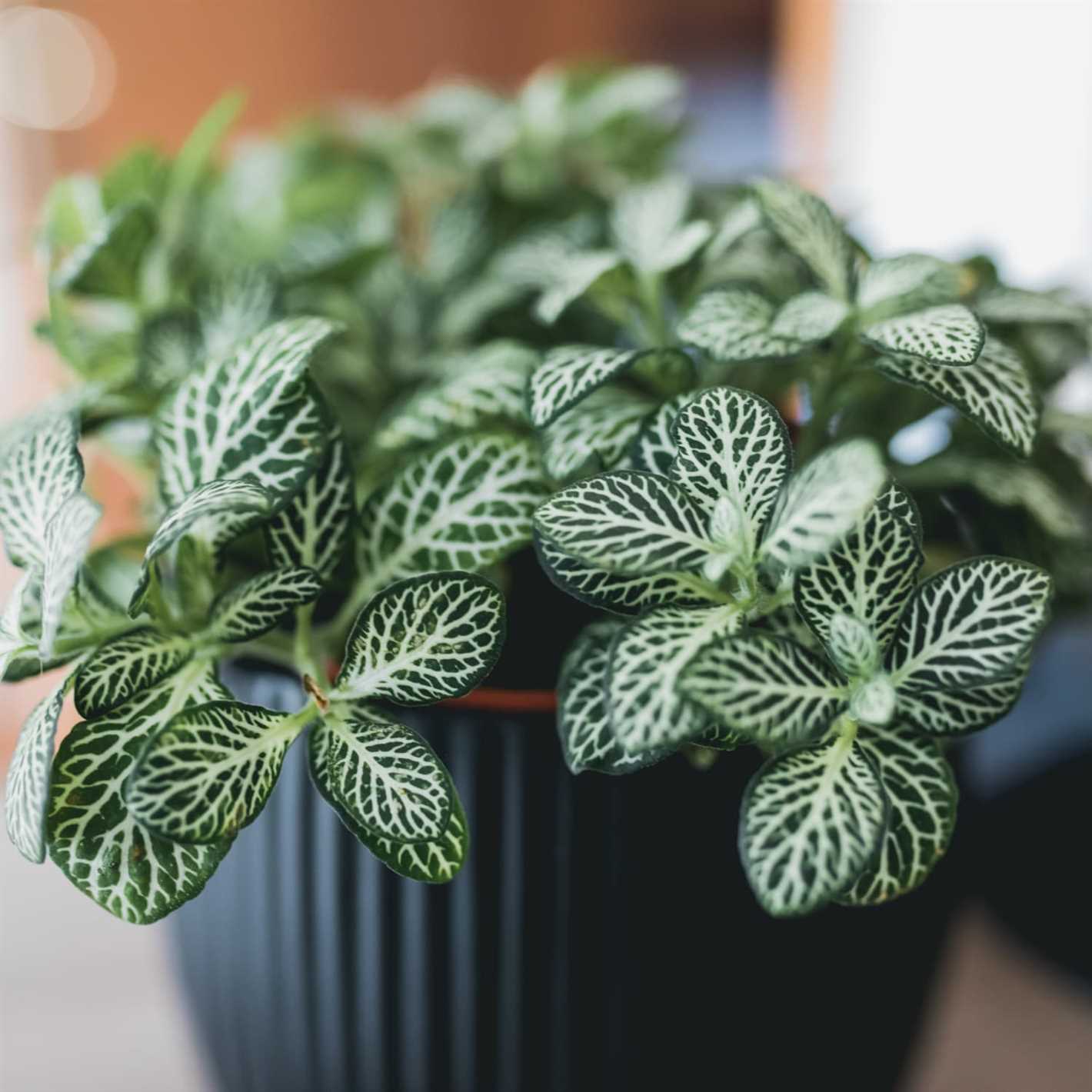

Fittonias are beautiful and low-maintenance plants that can add a touch of color and vibrancy to any space. Proper fertilization is essential to keep your Fittonia healthy and thriving. Here are some dos and don’ts to keep in mind when fertilizing your Fittonia:
Do:
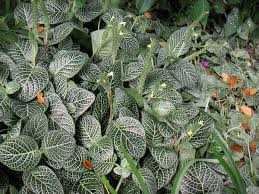

- Use a balanced water-soluble fertilizer
- Dilute the fertilizer according to the instructions provided
- Fertilize once a month during the growing season (spring and summer)
- Apply the fertilizer to damp soil to prevent root burn
- Use a slow-release fertilizer for long-term feeding
- Apply the fertilizer evenly around the plant
Don’t:
- Over-fertilize your Fittonia, as it can lead to fertilizer burn
- Use fertilizer on dry soil
- Apply fertilizer during the dormant season (fall and winter)
- Use a high-nitrogen fertilizer, as it can promote excessive foliage growth
- Apply fertilizer directly to the leaves
Remember that every Fittonia plant is different, so it’s important to monitor your plant’s response to the fertilizer. If you notice any signs of over-fertilization or nutrient deficiency, adjust your fertilizing regimen accordingly.
By following these dos and don’ts, you can ensure that your Fittonia receives the right amount of nutrients to grow and flourish.
Common Problems and Solutions for Fittonia
Yellow leaves
Yellow leaves on a Fittonia plant can be a sign of overwatering. Check the soil moisture and make sure you are not watering the plant too frequently. If the soil is wet, allow it to dry out before watering again.
Brown leaf edges
Brown leaf edges are usually caused by low humidity. Fittonia plants prefer high humidity, so misting the leaves or placing a humidifier nearby can help prevent this problem. You can also place the plant on a tray filled with water and pebbles to increase humidity.
Wilting
If your Fittonia plant is wilting, it may be a sign of underwatering. Check the soil moisture and water the plant if it feels dry. Make sure not to overwater it as well, as waterlogged soil can also cause wilting.
Pest infestations
Fittonia plants can attract pests like spider mites and mealybugs. If you notice tiny webs or cotton-like clusters on the leaves, it may indicate a pest infestation. Use a gentle insecticidal soap spray to get rid of the pests. Regularly wiping the leaves with a damp cloth can also help prevent pest problems.
Leaf curling
Leaf curling can be a result of low light or cold temperatures. Fittonia plants prefer bright, indirect light, so make sure it is placed in a well-lit area. Avoid exposing the plant to cold drafts or temperatures below 60 degrees Fahrenheit (15 degrees Celsius).
Stunted growth
If your Fittonia plant is not growing or experiencing stunted growth, it may be a sign of nutrient deficiency. Consider fertilizing the plant with a balanced, water-soluble fertilizer every month during the growing season. Follow the package instructions for the correct dosage.
Gorgeous Photos of Fittonia Varieties
Fittonia, also known as nerve plant or mosaic plant, is a beautiful houseplant known for its colorful and intricate foliage. There are several varieties of Fittonia, each with its own unique patterns and colors. Here are some stunning photos of different Fittonia varieties:
Fittonia albivenis: This variety features green leaves with striking white veins that resemble a delicate lace pattern.
Fittonia verschaffeltii: With its vibrant red veins contrasting against dark green leaves, this variety adds a bold look to any indoor space.
Fittonia argyroneura: The silver-green leaves of this variety are adorned with intricate veins in a unique network pattern.
Fittonia gigantea: As its name suggests, this variety has larger leaves with a mix of bright green and dark red veins that create a stunning display.
These are just a few examples of the breathtaking varieties of Fittonia available. Whether you choose a single variety or create a mix of different colors and patterns, Fittonia is sure to add a touch of elegance to your home or office.
Different Species of Fittonia: A Brief Overview
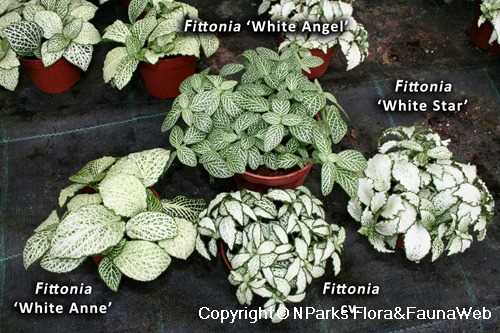

Fittonia, also known as nerve plant or mosaic plant, belongs to the Acanthaceae family. It is native to the tropical rainforests of South America, specifically Peru and Colombia. There are several species of Fittonia, each with its own unique characteristics and care requirements. Let’s explore some of the most common species:
1. Fittonia albivenis
Fittonia albivenis is the most commonly cultivated species of Fittonia. It is recognized by its distinct veins that contrast with the vibrant green, red, or pink color of its leaves. This species prefers a humid environment and indirect light.
2. Fittonia argyroneura
Fittonia argyroneura, also known as silver nerve plant, is characterized by its silver veins and dark green leaves. It is slightly more tolerant of low light conditions compared to other species of Fittonia, but it still prefers bright, indirect light.
3. Fittonia gigantea
Fittonia gigantea is a larger species of Fittonia with leaves that can grow up to 15 centimeters long. It typically has bright green leaves with white veins. This species requires high humidity and prefers bright, indirect light.
4. Fittonia pearcei
Fittonia pearcei is known for its elongated, lance-shaped leaves that have prominent pink or red veins. It thrives in high humidity and does best in bright, indirect light.
5. Fittonia verschaffeltii
Fittonia verschaffeltii, commonly known as red vein Fittonia, has vibrant red veins that contrast with its dark green or purple leaves. It requires high humidity and prefers bright, indirect light.
6. Fittonia albivenis ‘Frankie’
Fittonia albivenis ‘Frankie’ is a cultivar of Fittonia albivenis. It is known for its large, bold leaves that display a mix of green and white colors. This cultivar has similar care requirements to Fittonia albivenis.
These are just a few examples of the different species of Fittonia that are available. Each species has its own unique beauty and care needs, so it’s important to research the specific requirements of the Fittonia species you choose to cultivate.
Propagating Fittonia: Step-by-Step Guide
Propagating Fittonia, also known as nerve plant, is a great way to expand your collection or share this beautiful plant with others. Here is a step-by-step guide on how to propagate Fittonia:
1. Gather the necessary materials:
- Fittonia plant
- Sharp knife or scissors
- Small pots or containers
- Potting soil or a well-draining mix
- Watering can or spray bottle
2. Choose a healthy parent plant:
Select a mature Fittonia plant with vibrant foliage and no signs of disease or pests. This will increase the chances of successful propagation.
3. Prepare the pots:
Fill the small pots or containers with potting soil or a well-draining mix. Make sure the pots have drainage holes to prevent waterlogging.
4. Take cuttings:
- Using a sharp knife or scissors, take 3-4 inch stem cuttings from the parent plant. Choose stems that are healthy and have several leaves.
- Remove the lower leaves from the stem, leaving only a few leaves at the top.
- If desired, you can dip the cut end of the stem in rooting hormone to expedite the rooting process.
5. Plant the cuttings:
- Make a hole in the soil of the prepared pots and gently insert the cuttings into the hole, making sure the cut end is in contact with the soil.
- Press the soil around the cuttings to secure them in place.
6. Provide proper care:
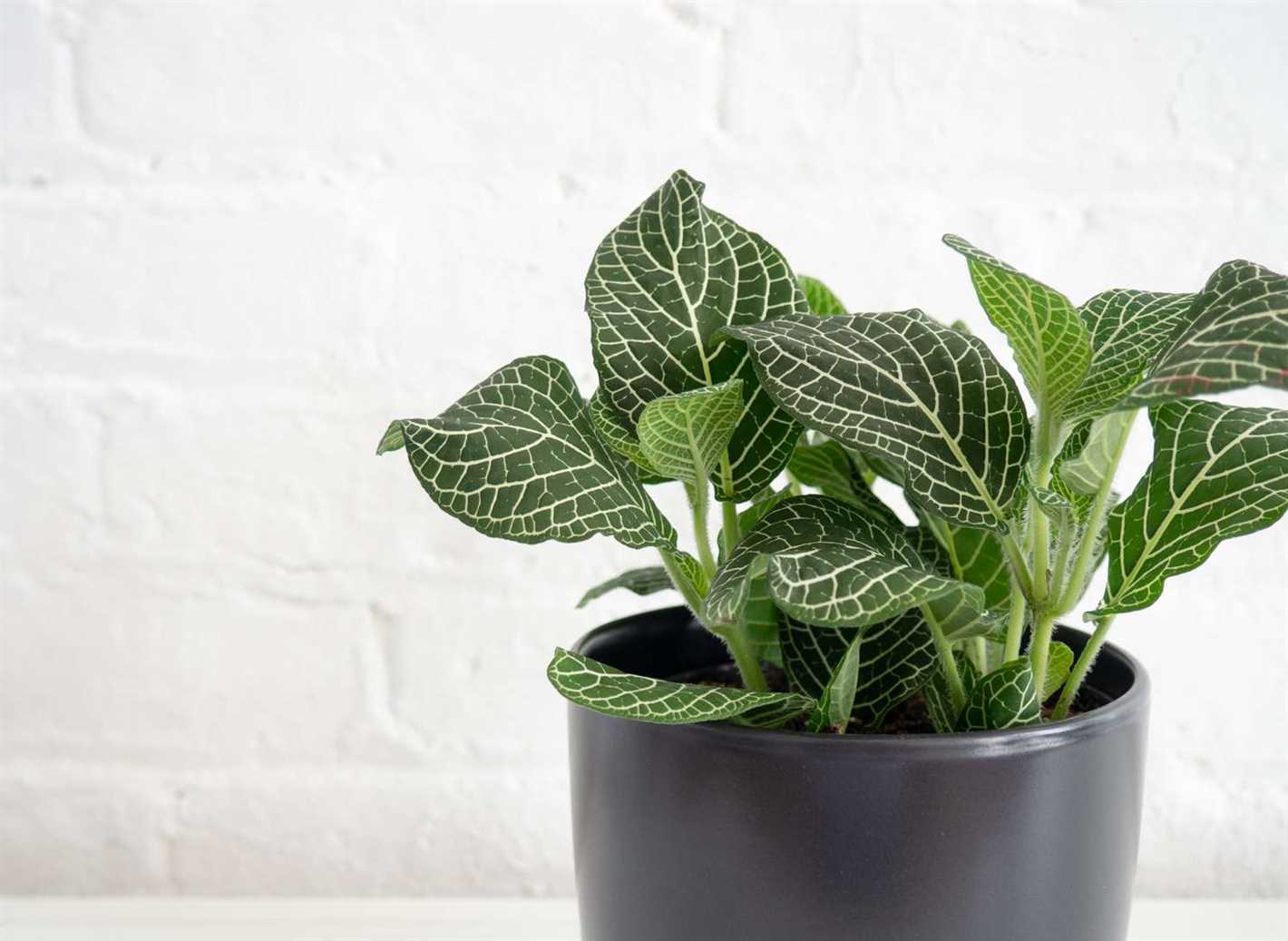

- Place the pots in a warm and bright location, but away from direct sunlight.
- Keep the soil consistently moist, but not soggy, by watering regularly or using a spray bottle to mist the cuttings.
- Avoid overwatering, as it can lead to root rot.
- Monitor the humidity levels and consider covering the pots with a plastic bag or using a humidifier to increase humidity.
7. Wait for roots to develop:
It typically takes 2-4 weeks for the cuttings to develop roots. During this time, avoid disturbing or moving the cuttings to allow for root establishment.
8. Transplant the rooted cuttings:
- Once the cuttings have rooted and are showing signs of new growth, carefully transplant them into slightly larger pots with regular potting soil.
- Continue providing proper care, including regular watering and indirect bright light.
By following these steps, you can successfully propagate Fittonia and enjoy more of these stunning plants in your home or garden.
Q&A:
What are some general care tips for Fittonia plants?
Fittonia plants require bright, indirect light and high humidity. They should be watered regularly, but not overwatered, as they are prone to root rot. It’s also important to keep their soil moist and well-drained. They can be grown in a potting mix that contains peat moss or a mixture of potting soil and perlite. These plants prefer temperatures between 60-80°F (15-27°C).
How often should I water my Fittonia plant?
Fittonia plants like to be kept consistently moist, but not overly wet. It’s important to water them when the top inch of soil feels dry to the touch. Typically, watering once or twice a week should be sufficient, but it’s important to adjust the frequency based on the moisture level of the soil.
What are the different species of Fittonia plants?
There are several species of Fittonia plants, including Fittonia albivenis, Fittonia argyroneura, and Fittonia verschaffeltii. Fittonia albivenis has pink or red veins on its leaves and is the most popular species. Fittonia argyroneura has silver veins on its leaves, while Fittonia verschaffeltii has larger leaves and darker, more prominent veins.
How can I propagate Fittonia plants?
Fittonia plants can be propagated through stem cuttings. To propagate, simply cut a healthy stem with a few leaves and place it in a glass of water. Roots will start to grow from the stem within a few weeks. Once the roots are well-developed, the cutting can be planted in a pot with potting soil and cared for as a mature plant.
What are some common problems that can occur with Fittonia plants?
Fittonia plants are prone to root rot if they are overwatered or if they sit in water for too long. They can also be susceptible to pests such as spider mites. If the leaves start to turn yellow or brown, it may be a sign of root rot. If the leaves show webbing or small dots, it may indicate a spider mite infestation. It’s important to address these issues promptly to prevent further damage to the plant.
Video:
NERVE PLANT Care Tips | Fittonia Houseplant Care







